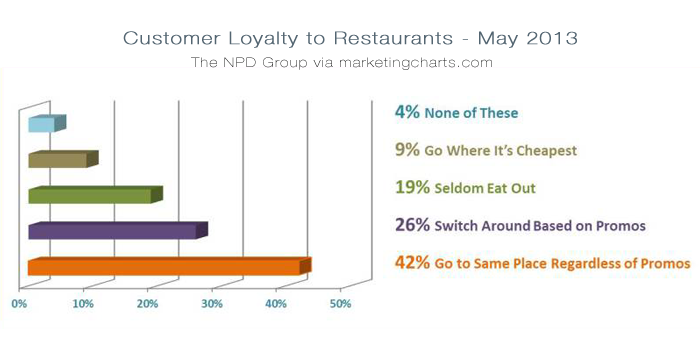Before adopting restaurant self-service POS payment options, you should understand the pros and cons and make sure that you don’t damage the customer experience in the process.
Do Diners Really Want Restaurant Self-Service POS?
More and more restaurants are moving toward not only restaurant self-service POS but digital ordering options as a way to increase efficiency and match capabilities to the consumer’s ever-increasing love of all things tech. It may be inevitable that most – if not all – restaurants eventually offer customers the ability to process their own payments in the course of their dining experience.
Inevitable or not, it’s important for restaurant owners to understand how implementing a self-service POS could impact their customer’s experience for better and for worse, so they can make sure they don’t unwittingly damage the customer experience in the process. Data from a Panasonic white paper called ‘Self Service POS: Do Diners Really Want It’ published on QSRWeb.com earlier this year provides information that restaurant industry entrepreneurs might want to consider before they take the plunge.

Pros and Cons of Restaurant Self-Service POS
Pro: Diners want the option – nine out of ten diners say they would prefer using a self-service option at the table (but not at a kiosk).
Con: Diners face a learning curve – navigating a menu (especially one they are not familiar with) and learning a new software environment takes time and doesn’t come easily to everyone. Wait staff who might have processed the payment in less than a minute might have to spend more time helping diners successfully use the platform, or fix the problems when they don’t.
Pro: Self-service options enable customization – 47% say they would use self-service options to customize their orders and tailor them to their preferences.
Pro: Self-service POS makes it easier to split the bill – 39% say they would want to use self-service POS to split the bill.
Con: Restaurants may incur higher merchant card processing fees when multiple payments are processed.
Pro: Millennials prefer it seven to one and Gen Y and Xers lean toward it (57%).
Cons: Polar opposites, 65% of Baby Boomers would rather not order for themselves and 40% of Gen Y and Gen X diners aren’t interested.
Cons: It’s a no-go with fine diners who are paying more (in part) for high-touch, hands on service, plus 13% of fast foodies aren’t interested either, since they’re worried about holding up the line behind them. Quick-service restaurants have the process down to a science; so much so that self-service ordering and payment POS systems are often slower than working with a live server.
Cons: The more self-service in the customer-experience, the less control and opportunities a brand has to exceed expectations and leave a lasting impression.
Restaurant Marketing: 3 Ways to Provide a Full-Service Experience in a Self-Service World
Repurpose the human element, don’t eliminate it.
Many people perceive implementation of kiosk and POS tech as an attempt to reduce payroll; however, the real goal should be to free up a restaurant’s employees to become true brand ambassadors whose role is to improve the customer experience, not automate it.
Make it an option, not a requirement.
A self-service POS is by no means a slam dunk with Baby Boomers, Gen X and Gen Y. As you introduce technology to enable digital ordering and self-service restaurant bill payment, you should view it as an option that can enhance the experience for some but detract from others. It should not replace the diners option of ordering from and having their payment processed by a real person, but be introduced as an option for those who are interested.
Use tech to boost up-sells and keep diners in your restaurant longer, instead of viewing it as a way to speed customers in and out the door.
Increasing the average order of diners can make a restaurant much more profitable. Instead of viewing restaurant self-service POS as a way to increase efficiency and move diners through more quickly, use its technology to make suggestions to diners about side dishes, beverages and special offers that can boost your bottom line revenues.
***
We may be able to help you reduce your restaurant merchant services fees and we also offer free service and setup for restaurant point of sale solutions:
- Restaurant point of sale equipment and software
- Restaurant mobile POS solutions
- Restaurant gift cards, loyalty and reward programs
- Restaurant cash advances
- Restaurant merchant services / payment processing
Interested? Contact us at 888-580-2234 or complete the form below for a free, no-hassle quote on any of our salon business solutions.



